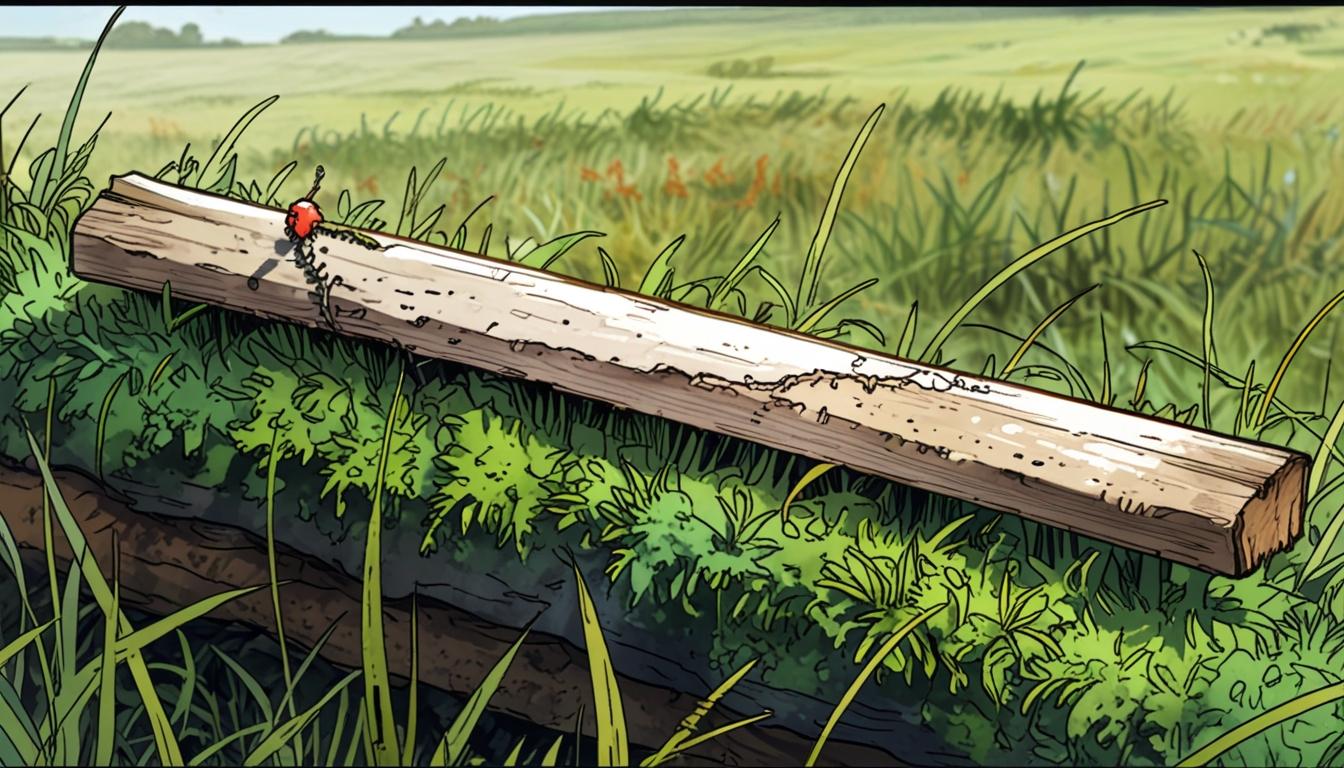The endophytic fungus Epichloë, long overlooked in UK pastures, shows promise in enhancing crop resistance to pests and environmental stress, potentially reducing chemical use and supporting sustainable farming in the face of climate change.
The hidden fungus known as Epichloë has captured the attention of agricultural scientists and farmers alike for its potential to revolutionise farming practices in the UK. This endophytic fungus, nestled within the tissues of grasses, has demonstrated an impressive capability to enhance the resilience of crops against various environmental challenges, signalling a promising future for UK agriculture.
Epichloë thrives in a symbiotic relationship with its host grass, acting as a natural defence mechanism. The fungus significantly boosts the plant’s ability to withstand pests, endure drought conditions, and fend off diseases. Such advantages could ultimately lead to a reduced dependence on chemical pesticides and fertilisers, thereby slashing production costs while also mitigating the environmental footprint of conventional farming methods. Countries such as New Zealand and the United States have already leveraged specific strains of Epichloë in pasture grasses, where it produces natural pest-repelling compounds, effectively lowering insect damage. Moreover, advancements in breeding have led to non-toxic strains, safe for livestock and beneficial for agricultural use.
Despite its innate presence in wild grasses across Britain, there has been little intentional introduction of Epichloë into UK pastures or cereal crops. This hesitance may stem from the comparatively lower levels of pest pressure faced by UK farms, an advantage that may not last as climate change exacerbates agricultural challenges. Increasingly erratic weather patterns are pushing UK farmers to seek out sustainable and resilient strategies for crop management. Integrated pest management systems, which blend various protective measures, could find a key ally in Epichloë.
The potential for Epichloë extends beyond pastures; it may also play a significant role in enhancing the resilience of staple crops like wheat, barley, and oats—essential components of the UK’s agricultural economy, contributing approximately £4 billion annually. By bolstering these crops with a natural and low-input solution, farmers could secure more stable food supplies while adhering to environmental targets.
However, the introduction of Epichloë into commercial farming necessitates a careful approach. While the fungus boasts numerous benefits, certain strains can produce harmful toxins if not properly managed, posing risks to both livestock and beneficial insects. Concerns surrounding the large-scale deployment of Epichloë also include its impact on biodiversity and ecosystems. Thus, a rigorous framework for testing and regulation will be integral to its implementation. International examples, such as New Zealand’s evaluation system for agricultural strains of Epichloë, offer valuable insights into ensuring that only safe and effective varieties reach farmers.
Research supports Epichloë’s dual capabilities: it not only stimulates plant growth by activating growth-promoting hormones but also fortifies plants against herbivores through the production of antiherbivore alkaloids. This unique mechanism may enable improved yields without the trade-offs typically associated with chemical treatments. Additionally, studies have highlighted its role in regulating physiological processes such as photosynthesis and antioxidant activity, which further enhance plant resilience against various abiotic stresses, including soil contamination by heavy metals.
As the UK agricultural sector grapples with the pressing issues posed by climate change and the diminishing efficacy of chemical pesticides, innovative solutions like Epichloë could offer a crucial lifeline. While it may not supplant chemical treatments overnight, the integration of Epichloë into farming practices promises to foster more resilient and sustainable agricultural systems. If adopted judiciously, this hidden fungus could reshape the landscape of UK farming, supporting healthy crops, reducing environmental impact, and equipping farmers to navigate an increasingly uncertain future.
Reference Map
- Paragraphs 1-2, 3, 4, 5
- Paragraph 4
- Paragraph 5
- Paragraph 5
- Paragraph 5
- Paragraph 6
- Paragraph 7
Source: Noah Wire Services
- https://www.openaccessgovernment.org/could-the-hidden-fungus-known-as-epichloe-be-the-future-of-uk-farming/192674/ – Please view link – unable to able to access data
- https://www.cabidigitallibrary.org/doi/10.1079/planthealthcases.2025.0002 – This study examines the potential commercial adoption and impacts of Epichloë endophytes in UK pasture grasses and cereals. It highlights the benefits of Epichloë, including increased plant resistance to pests and diseases, enhanced resilience to abiotic stresses like drought, and improved yields. The paper discusses the current lack of Epichloë-infected seed lines in the UK market and suggests that, despite the absence of immediate pest pressures, Epichloë remains a promising avenue for mitigating pesticide losses and adapting to climate change in UK agriculture.
- https://nph.onlinelibrary.wiley.com/doi/full/10.1111/nph.17335 – This article explores how Epichloë fungal endophytes can eliminate the growth–defence trade-off in plants. It proposes that these endophytes stimulate plant growth by activating growth-promoting hormones while simultaneously producing antiherbivore alkaloids, thereby enhancing plant resistance without compromising growth. The study suggests that Epichloë endophytes play a dual role in promoting plant growth and defending against herbivores, offering a unique mechanism for improving plant health and productivity.
- https://pubs.acs.org/doi/10.1021/acs.jafc.0c01396 – This research investigates the role of Epichloë endophytes in improving host grass resistance and soil properties. It demonstrates that Epichloë enhances plant resistance to abiotic stresses by regulating physiological processes such as photosynthesis and antioxidant activity. Additionally, the study shows that Epichloë can modulate soil properties and microbial diversity, leading to improved soil fertility and plant growth. The findings suggest that Epichloë endophytes offer significant prospects for enhancing crop yield, plant resistance, and food safety in ecological systems.
- https://www.mdpi.com/2223-7747/10/10/1997 – This review examines the antagonistic effects of Epichloë fungal endophytes on plant pathogens. It discusses how these endophytes can activate host plant hormonal signaling pathways, such as salicylic acid and jasmonic acid, leading to enhanced disease resistance. The article also explores various mechanisms, including the production of antimicrobial compounds and competition for resources, through which Epichloë endophytes suppress plant pathogens. The study highlights the potential of Epichloë as a biological control agent in sustainable agriculture.
- https://www.mdpi.com/2076-2607/12/5/956 – This study investigates the impact of aboveground Epichloë endophytic fungi on the rhizosphere microbial functions of the host Melica transsilvanica. It finds that Epichloë enhances host tolerance to heavy metal ions such as cadmium, aluminum, zinc, and copper in soil. The presence of Epichloë activates the antioxidant system of host plants, reducing oxidative stress caused by heavy metals. The study suggests that Epichloë can improve plant growth and soil health under heavy metal stress conditions.
- https://en.wikipedia.org/wiki/Epichlo%C3%AB – This Wikipedia article provides an overview of the genus Epichloë, a group of ascomycete fungi forming endophytic symbioses with grasses. It discusses the ecological significance of Epichloë, including its effects on host plants such as altering plant community composition and food webs. The article also covers the commercial use of Epichloë-infected grass varieties, particularly in pasture and turf applications, highlighting their benefits in agriculture.
Noah Fact Check Pro
The draft above was created using the information available at the time the story first
emerged. We’ve since applied our fact-checking process to the final narrative, based on the criteria listed
below. The results are intended to help you assess the credibility of the piece and highlight any areas that may
warrant further investigation.
Freshness check
Score:
8
Notes:
The narrative discusses current agricultural challenges and potential solutions, including climate change impacts, which are relevant to contemporary issues. However, there is no specific date mentioned in the content, and the topic of Epichloë has been discussed in previous years, though its application is still evolving.
Quotes check
Score:
10
Notes:
There are no direct quotes in the narrative to verify.
Source reliability
Score:
6
Notes:
The narrative originates from Open Access Government, which is not a widely recognized mainstream publication but appears to be a professional outlet focused on government and public policy issues.
Plausability check
Score:
8
Notes:
The claims about Epichloë are plausible based on scientific research and international examples. The narrative provides a balanced view of its potential benefits and challenges.
Overall assessment
Verdict (FAIL, OPEN, PASS): OPEN
Confidence (LOW, MEDIUM, HIGH): MEDIUM
Summary:
The narrative discusses the potential of Epichloë in UK farming, presenting both benefits and challenges. While it is plausible and relevant to current agricultural issues, the source is not a major mainstream publication, which may affect reliability.













